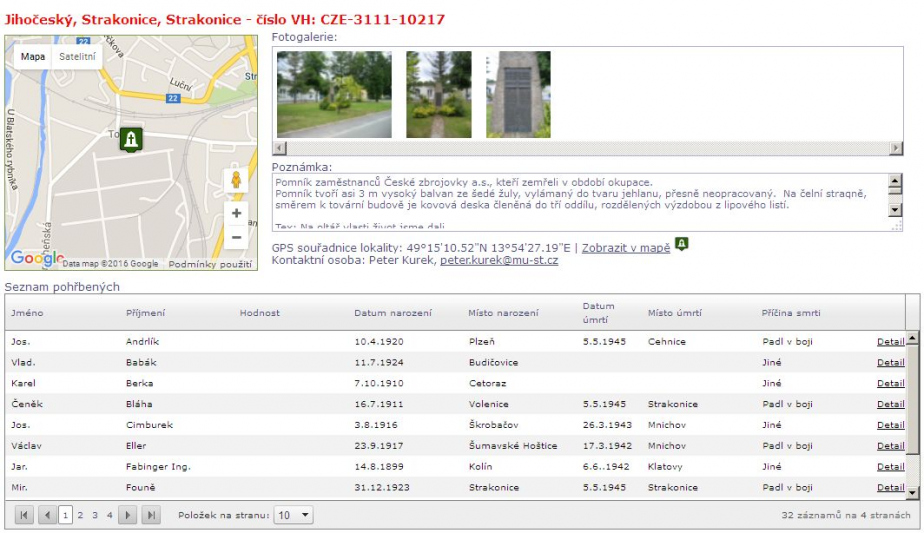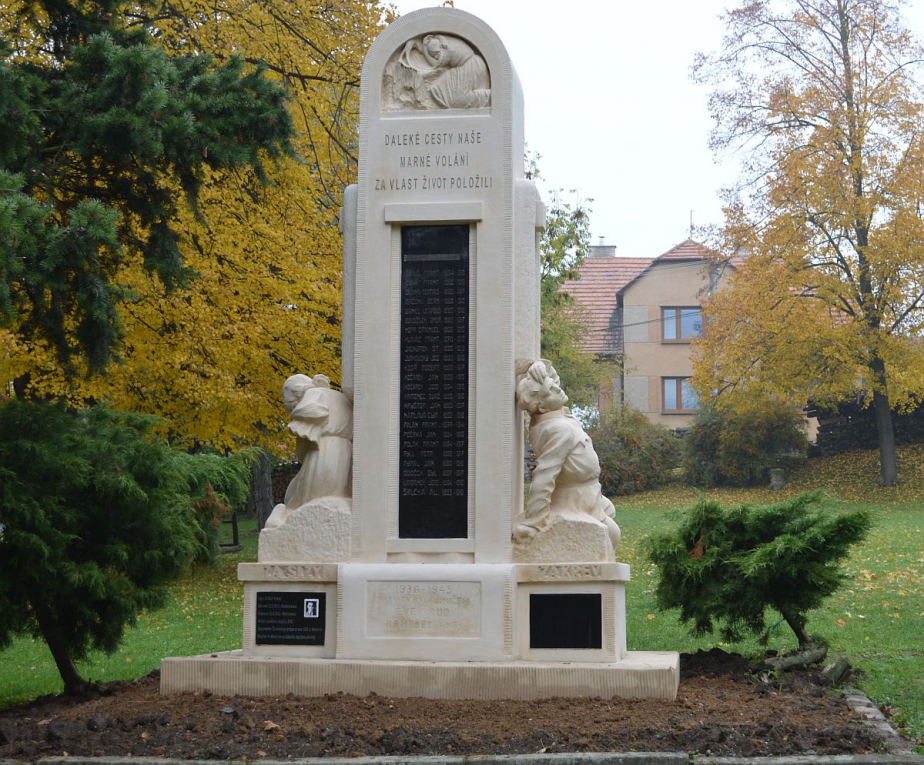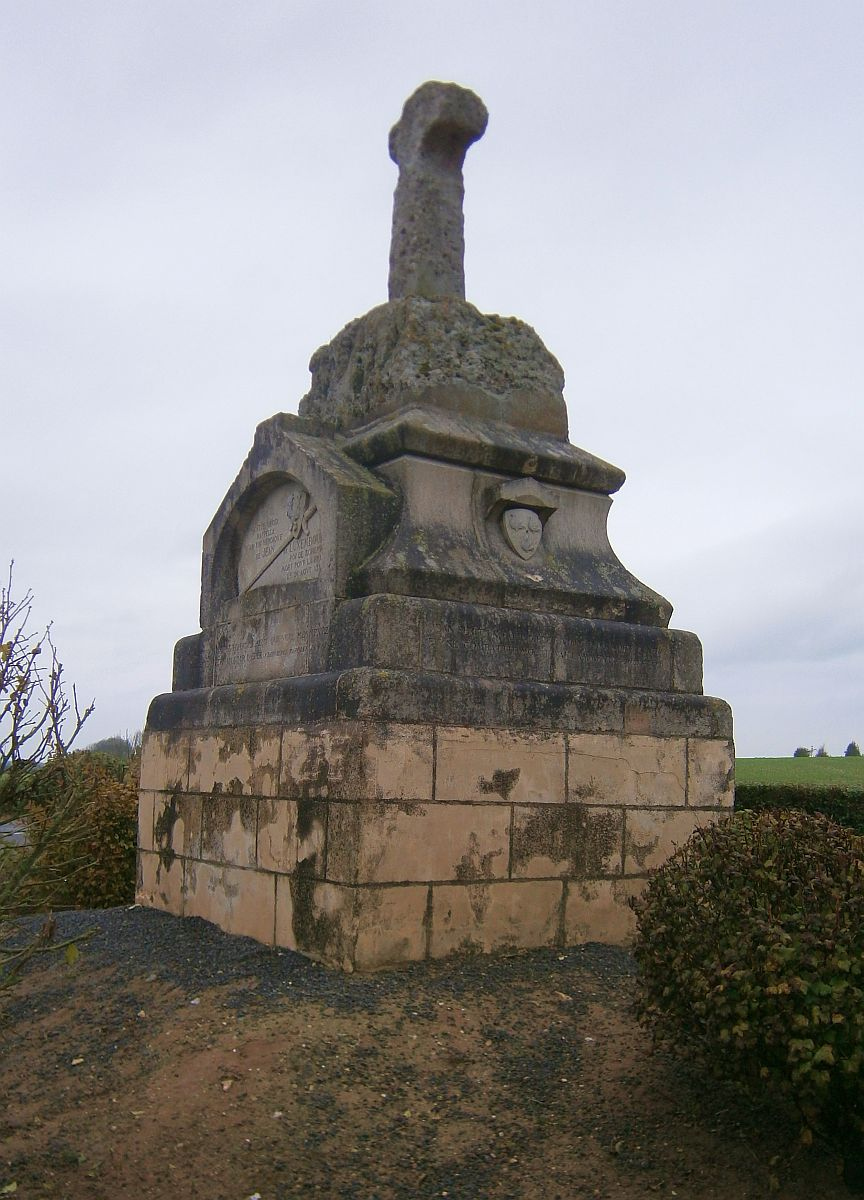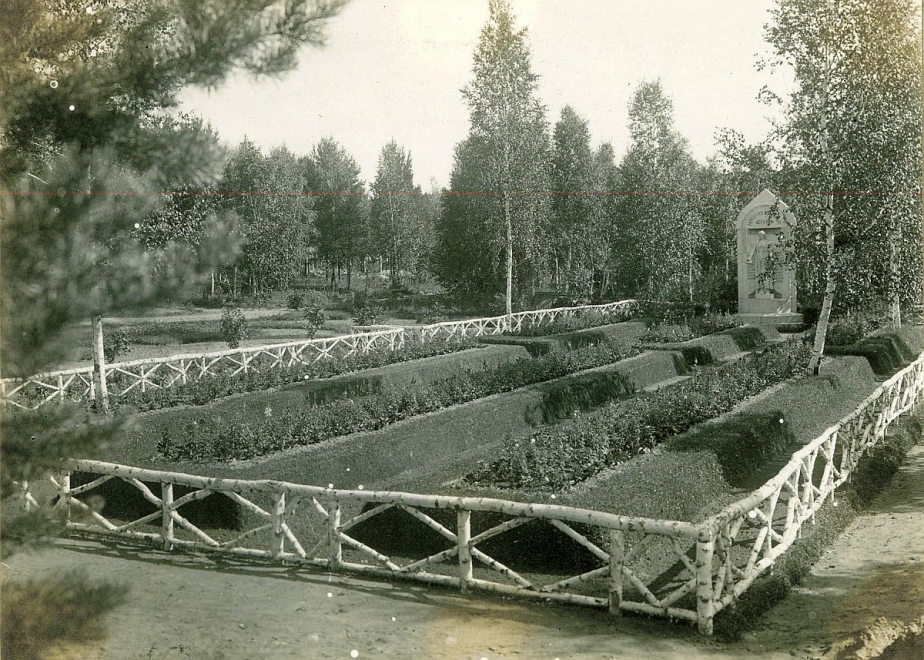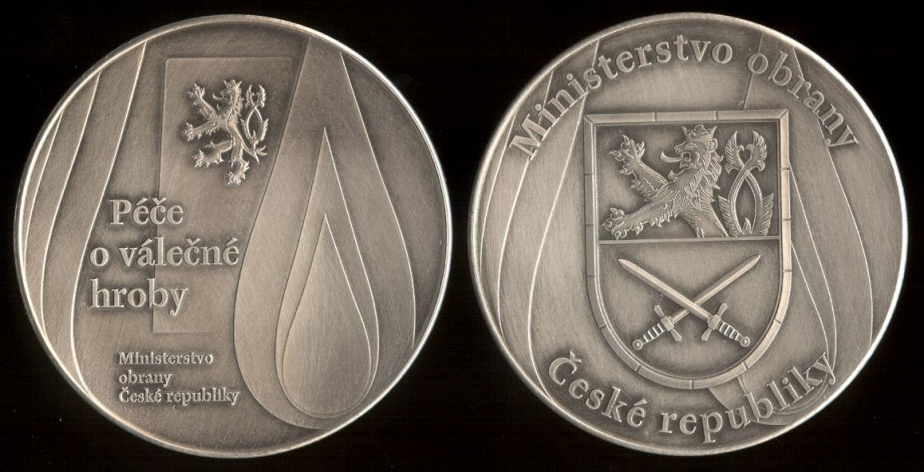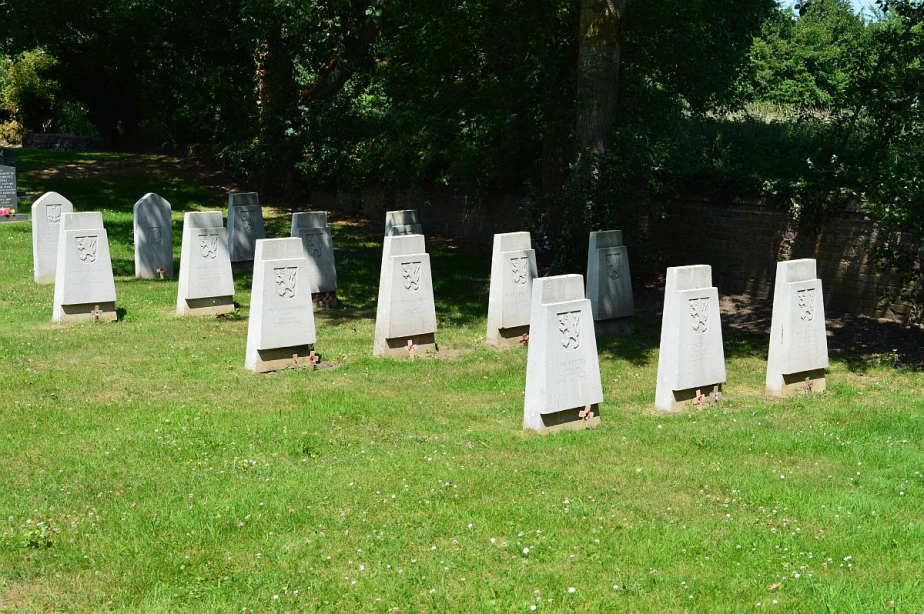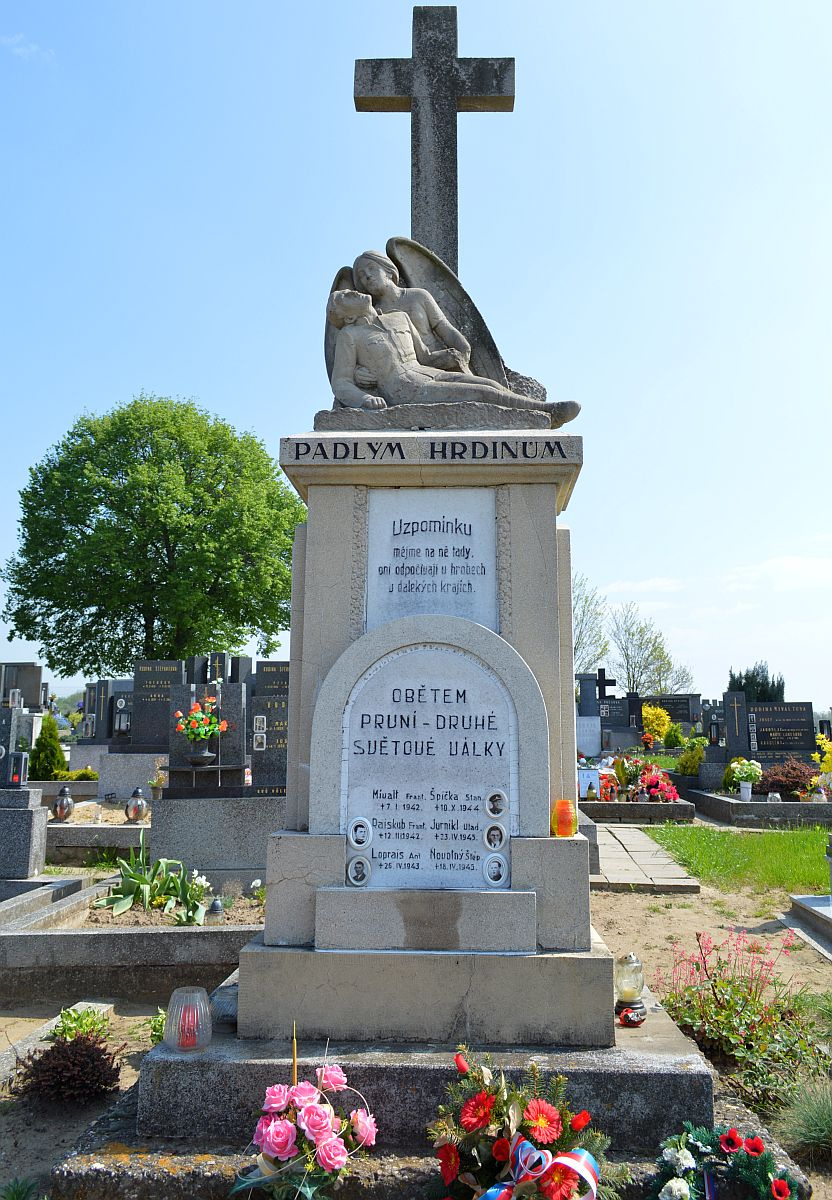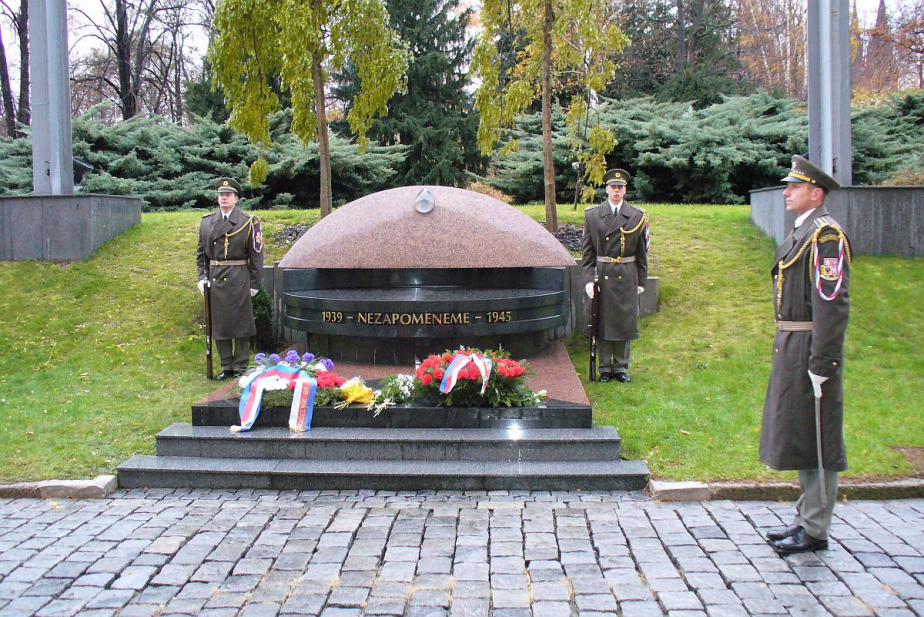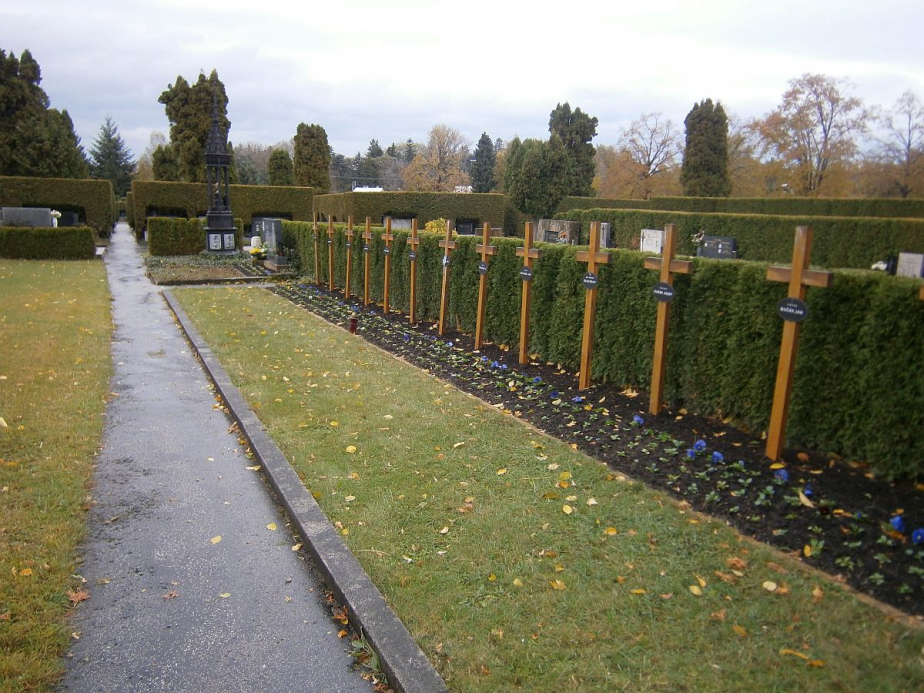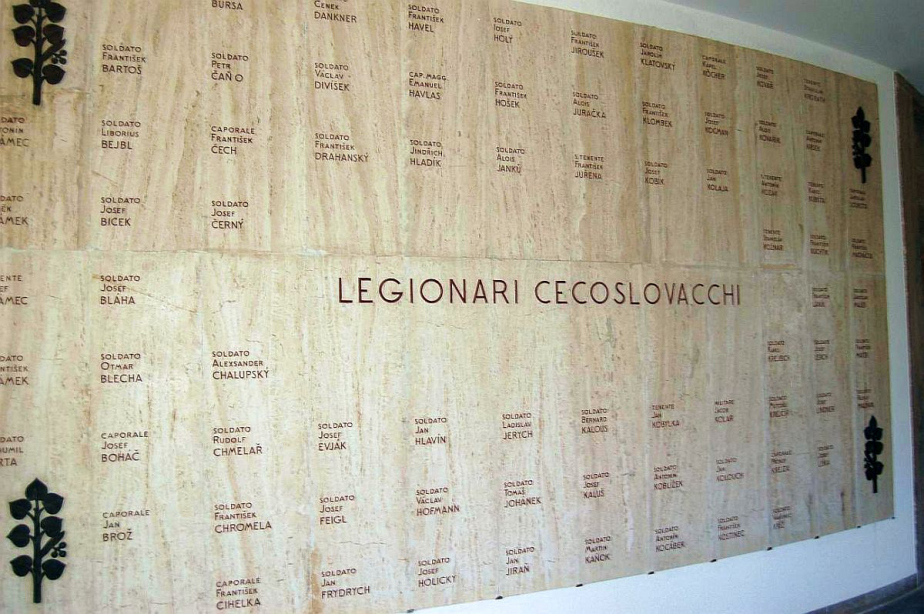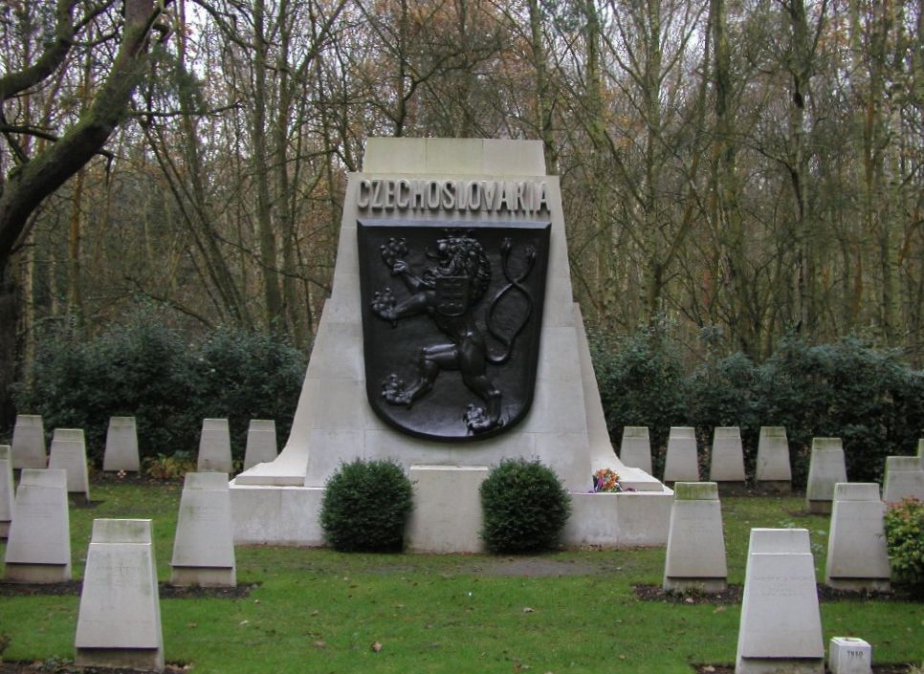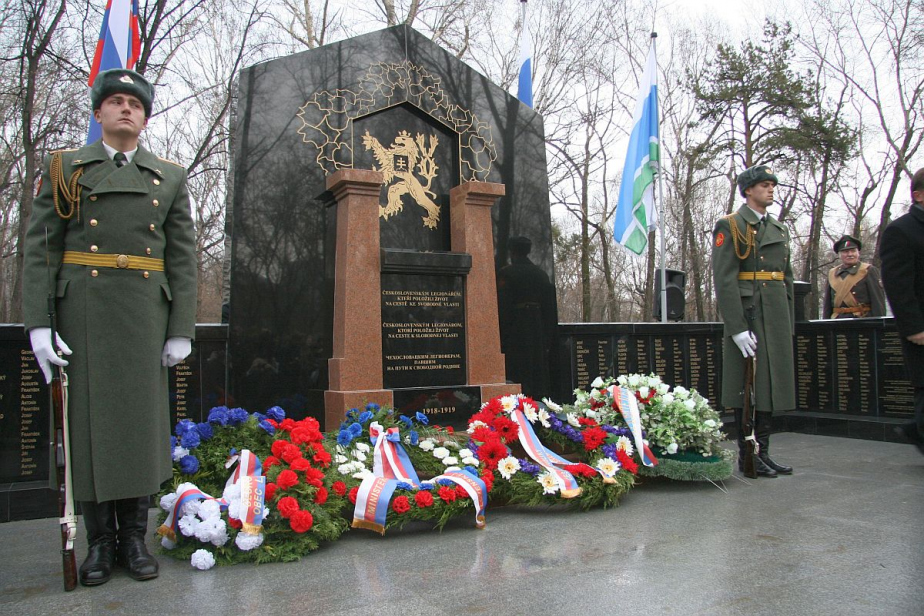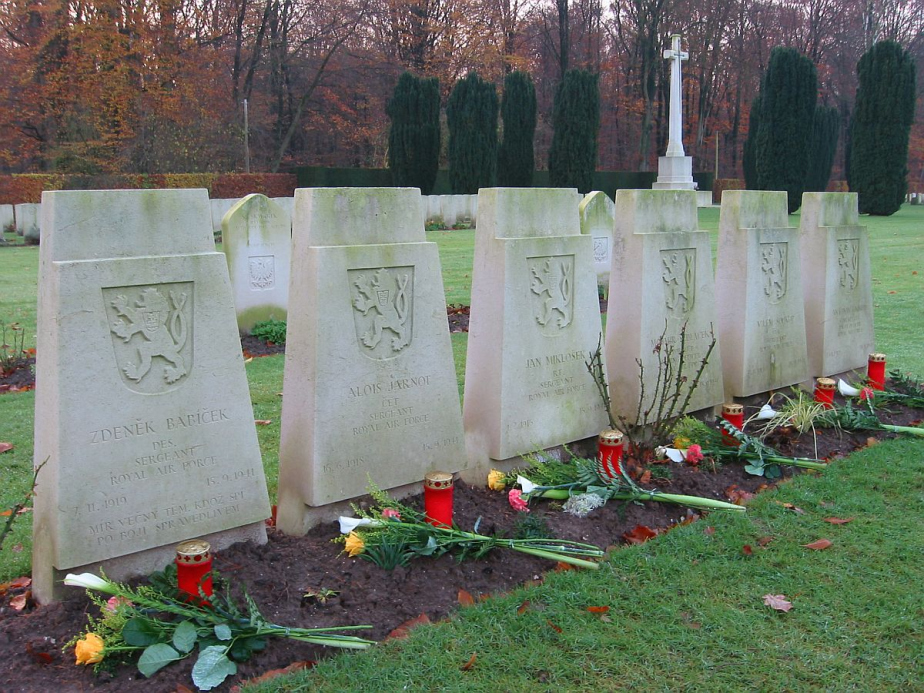Care of war graves
The care of war graves is the Czech Republic is regulated by a law, which sets the owners and state administration bodies rights and duties in the field of care of war graves and commemoration sites.
The owner of a war grave has to take care of it, to enable the access to it in order to show respect or to do works connected with the care of the war grave.
According to the law the care of war graves is understood as their adjustment and protection, furthermore the establishing of new war graves, the relocation or closing of them including the exhumations.
The law also defines the terms maintenance and adjustment of a war grave, i.e. its marking, the position commemorative plaque, monument, memorial or similar symbol, including the war grave maintenance its surroundings and access to it.
Any other change of the war grave other than the above mentioned maintenance and adjustment, especially its relocation or closing is possible only with a written consent of the Ministry of Defence.
The law obliges the state administration bodies especially to coordinate the care of war graves and to keep a record of them. This is the task of the Department of War Veterans and War Graves of the of the Ministry of Defence of the Czech Republic and its War Graves Unit.
Points of contact:
| Head of the War Graves Unit | PhDr. Pavel Kugler Ph.D | +420 973 225 940, +420 702 000 786 | kuglerp@army.cz |
| Deputy Head of the War Graves Unit | Mgr. Adam Hájek | +420 973 225 953, +420 720 078 257 | hajeka@army.cz |
| The War Graves Unit | valecnehroby@army.cz |
Ministerstvo obrany České republiky
Odbor pro válečné veterány a válečné hroby – Oddělení pro válečné hroby a pietní místa
Náměstí Svobody 471
160 01 Praha 6 - Dejvice
War graves in the Czech Republic
Before the World War I
The issues of burying soldiers killed in armed conflicts are as old as the wars conducted by military organized combat units. The practice of burying soldiers was guided by the customs of individual cultures and probably was derived from the general customs to bury the deceased.
After regular military has been introduced in the 17th Century the soldiers have been buried by the military administration, by the military chaplains service.
Later, after the WW I he rules of burying soldiers have been embodied to the peace treaties, where the contracting states governments undertook to take care so as the graves of soldiers and seamen buried on their territory are respected and maintained.
Inter-war period
The Czechoslovak Republic after its foundation showed respect to those who have been killed in the struggle for its birth. In addition to that it has also shown respect to those who fell on the side of the enemy.
As early as on April 1st, 1919 the MoD's "Central Inspectorate of War Graves" was established, the sphere of authority of which also included the war graves processing and record keeping.
The Inspectorate was later renamed as Central Military Graves Administration and on April 1st, 1924 it registered 4.970 cemeteries in 4.591 localities with 139.557 war graves.
In the half of 1924 the Ministry of Interior (MoI) entered to the war graves care and a part of the responsibility for the war graves administration has been entrusted to the gendarmerie, i.e. the responsibility for an exact war graves recording on all cemeteries within their precinct. It was a one-time cooperation, which ended at the end of December 1924.
In this year the Ministry of Defence elaborated a bill on war graves, where the term war grave has been defined and duties laid down for the municipalities in whose districts the world war participants are buried to establish and maintain war graves. The state had to grant the communities allowances for the graves maintenance.
The bill anticipated the care of war graves until December 31st, 1934, after this date the war graves could be liquidated. Although the bill has not been approved, it shows the first republic's attitude to the war graves question.
Despite the cooperation of the two ministeries it was not possible to protect the war graves fully, which was caused partly by lack of place for burying the deceased, partly by the non-existence of the mentioned law, which would protect the war graves. Reports from the gendarmerie stations show that the owners of some community and church cemeteries after the mouldering time liquidated war graves without informing the military administration representatives (gendarmerie station or garrison command) in advance, who would in time and according to issued directives ensure further existence of the graves.
The difficulties with the provision of the care of the culminated in 1938, when the Ministry of Interior on a request of the Ministry of National Defence renewed the cooperation in the war graves administration. Although the responsibility of the Ministry of National Defence has not changed, the gendarmerie stations became the war graves care implementating bodies and the Ministry of Interior started to assume the responsibility in this field.
With the establishment of the Protectorate Bohemia and Moravia this situation was confirmed and the MoI Military Document Office was entrusted with the care of military war and peacetime graves.
After World War II
In the time after the war the responsibility for the care of war graves returned for a short time to the responsibility of the Ministry of National Defence, but already in 1951 it was transferred to the Ministry of Interior. The war graves business, which moved to the responsibility of the Ministry of Interior, also included the war graves records, permitting the graves liquidation, control of the adjustment and maintenance.
Although in this time still the war graves of "foreign nationals" were spoken of, but already rather with accent to the allies. As war graves above all the graves of military personnel of foreign and domestic Czechoslovak Army, partisan units and allied forces were regarded.
Above all it were new established and at high costs built Red Army war cemeteries. According to first investigation the following WW II victims on the Czechoslovak territory were found out:
Fallen:
- Red Army: 97.325
- Romanian Armed Forces: 12.742
- Czechoslovak Army - East: 5.620
- Czechoslovak Army - West: 896
During the Nazi occupation executed Czechoslovak officers and Warrant Officers: 521
Victims of the:
- Slovak National Uprising: 15.000
- Prague Uprising: 1.694
- Nazi persecution: 36.530
Executed and died in Terezín: 35.000
Furthermore 279 Americans, 268 Britons, 474 Frenchmen, 44 Dutchmen, 10 Belgians, 91 Poles, 37 Yugoslavs and 17 Bulgarians, i.e. 206.952 altogether and about 107.477 Jews deported from the Czech lands and Slovakia.
In the beginning of 1950 the gestion of the care of war graves transferred by a government resolution from the Ministry of National Defence to the Ministry of Interior.
Since 1999 the care of the war graves is entrusted to the Ministry of Defence, which coordinates the care of war graves in the Czech Republic and the Czech war graves abroad.
Current situation
The Law No. 122/2004 Coll. on Military Graves and Commemoration Sites and the amendment of the Law No. 256/2001 Coll. on Funeral Services, as amended, was adopted on February 20th, 2004 and which set the rights and obligations in the field of care of war graves and commemoration sites, and the state administrative bodies and their authority in the field of war graves.
The law defines a war grave as a place where the mortal remains of people, who perished in consequence of the active participation in a military operation or as prisoners of war, or the mortal remains of persons, who perished in consequence of participation in resistance or a military operation during the war are buried.
As a war grave also a commemoration site, under which a commemorative plaque, a monument, a memorial or a similar symbol reminding of war events and their victims is understood.
The care of war graves includes the adjustment, protection, establishment, relocation or the liquidation of war graves, including exhumations.
The owners do the care of war graves, monuments, charnel houses, commemorative plaques and memorials, and if the owner in not known, the real property owner, where the war grave is located. Municipalities are mainly the war graves owners.
The law imposes on municipalities with broader scope of authority the duty to keep records of war graves in their administrative district and to inform the regional office of the war graves number and condition.
The regional office coordinates the care or war graves within the region, keeps a summary record on them and informs the CR Ministry of Defence of their number and condition.
The Ministry of Defence coordinates the care of war graves in the Czech Republic and abroad, keeps a central record and grants subsidies for the war graves care.
The law came into effect on July 1st, 2004, and it started a qualitative new period of war graves care in the history.
War graves abroad
The Czech Republic is in the care of war graves bound by international treaties.
The norms of international law for the case of an armed conflict are discussed multinational, above all the Geneva Conventions from August 12th, 1949 on Protection of War Victims and their Additional Protocols on Protection of Victims of International Armed Conflicts from June 8th, 1977. Those documents set the duty of states to respect and maintain war graves, furthermore to allow the repatriation of the mortal remains, to allow the access to the graves, to mark and to register them.
Similar commitments also are included to some bilateral international agreements of a general (Austria, Germany, Ukraine, Russia and Italy) or special character (Slovakia, Russia, Slovenia and Great Britain).
The most important Czech war graves abroad are:
Slovakia
Dukla, Liptovský Mikuláš, Štůrovo, Nové Zámky, Bajč, Cetuna (Moravské Lieskové), Osadná
Kalinivka, Ozerna (Zborov), Velikaja Doch (Bachmatch), Sololovo, Kiev, Belaja Cerekev, Svitanok
La Targette, Vouziers - Chestres, Cernay, Cognac, St. Omer - Longuenesse
Buzuluk, Ekaterinburg, Vladivostok, Cheljabinsk, Irkutsk, Krasnoyarsk
Poland
Dukla, Nowosielce, Wodzislaw, Jastrzebie Zdroj, Zory, Gorlice, Deblin
Brookwood, East Wretham, Leamington Spa, Runnymedee
Rovereto, Arco, Riva
Balassagyarmat, Eger, Szolnok, Pécs
Adinkerke (Dunkerque), De Panne, Veurne
Slovenia
Dutovlje, Tolmin, Ukane
Bergen ob Zoom, Nijmegen
Munich, Kleve
Tobruk
Charbin
Alamein










